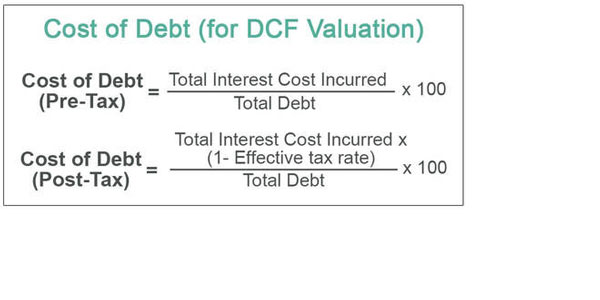The entire sum of money that insurance and financial services businesses operating inside the European Union (EU) are obliged to possess is referred to as the stability investment costs (SCR). The SCR is an equation statistic to guarantee that all measurable risks, such as economic, administrative, and competitor dangers, are considered. These risks include non-life testing, life capital raising, healthcare underwriting, and non-life capital raising. The demand for stable capital accounts for the company's current operations and any growing company anticipated during the next 12 months. At a minimum of once per year, it has to be reassessed.
How the Requirements for Solvency Capital Are Met?

Capital adequacy reserve requirements are a component of the EU's Capital Adequacy Regulation, which was published in 2009. The Capital Adequacy Directive stands for more than a hundred statutes within the EU. The directive's goal is to bring the 28 countries that make up the EU closer in terms of how they regulate the insurance sector. The regulators and supervisors can increase the required amount of capital if they conclude that the minimum does not accurately represent the risk connected with a certain kind of coverage.
The SCR is established at a threshold that guarantees that the health insurance companies and reinsurers will be able to meet their responsibilities owed to companies and recipients over the subsequent twelve months with a likelihood of 99.5%. Furthermore, this reduces the likelihood of an insurer or reinsurer going bankrupt in various instances. A modular step has been applied, which means that an individual's exposure level to each prone area will be evaluated, and then calculates its averages and results.
Solvency II Directive's Three Main Supporting Structures
The EU law known as Solvency II has three levels or foundations for the capitalization requirements that must be fulfilled. The quantitative criteria, or the amount of money that insurance is expected to keep, are addressed in the first pillar. Insurers must meet certain criteria on their governance, level of effective oversight, and risk management to satisfy the standards of Pillar II. Pillar III specifies transparency and accountability standards.
The stringent character of Solvency II has been the subject of certain complaints. As per the RIMES, a supplier of mobile networks, the recently enacted legislation places considerable and complicated compliance costs on a variety of European banking firms. For instance, in 2011, 75% of businesses indicated they could not meet the disclosure rules for Pillar III.
Minimum Capital Need
Calculating the capital adequacy (also known as the MCR) is required in addition to calculating the Solvency Capital Requirements. This number is below where a foreign regulatory authority would step in to take action. Over one year, the MCR is supposed to reach a level of adequacy with a likelihood of 85 percent.
It is recommended that the SCR and MCR statistics are recommended to be treated as "moderate" and "tough" ceilings for compliance issues. That is, a tiered involvement process is implemented once the asset ownership of the (re)insurance business falls underneath the SCR, with involvement increasingly successive and more powerful as the capital holdings attempt to reach the MCR. In other words, once the asset holding of the (British insurance business falls below the Solvency Capital Requirement, a tiered involvement process is implemented. To resolve violations in the MCR, local authorities are given many measures to choose from, thanks to the Solvency II Directive. These possibilities include the removal of permission from marketing-specific legislation and the enforced liquidation of the firm.
How Do Solvency Capital Requirements Work?

The criteria for capital that Solvency II imposes will be prospective and economical, which means that they will be adapted to the particular risks that each insurer will carry. This will enable an appropriate distribution of capital throughout the EU. In order to prompt proportional and timely supervisory involvement, they will be specified using a two-step pyramid, which will include the solvency financing needs and the maximum capitalization.
Existing limits on the make-up of investment accounts enforced by National Governments will be done away with due to the new system, which will also remove such restrictions. Rather, underwriters will be allowed to invest based on the so-called "prudent person concept," The amount of capital required would be determined by the level of risk posed by investments.
In insurance groups' case, the strategy used for individual insurers will be utilized so that groups may be acknowledged and administered as economic entities in their own right. The benefits of diversity will be recognized within the framework of capital requirements. This indicates that the overall risks of a corporation are lower than the aggregate of the risks posed by its units. This will also assist, for the benefit of shareholders, in more effective utilization of resources.
A bigger role will be given to the group supervisor under the new system, which will also encourage more coordination between the state pension examiners that are responsible for monitoring the affiliates of any particular group. The European Health coverage and Professional Pension Payments Authority have been responsible for ensuring that the unified rule book is enforced uniformly across the entirety of Europe. Regarding the supervision of cross-border organizations, EIOPA is also equipped to act as a mediator if differences arise between the national and state authorities.
Conclusion
It is an EU-mandated financial asset for reinsurance and insurance businesses in Europe. Both the standard capital adequacy (SCR) and the minimum investment requirement (MCR) are determined by an accountancy equation that has to be recalculated on an annual basis. Moreover, the disclosure obligations for the SCR that are specified by the Capital Adequacy regulation are organized into three distinct pillars.



